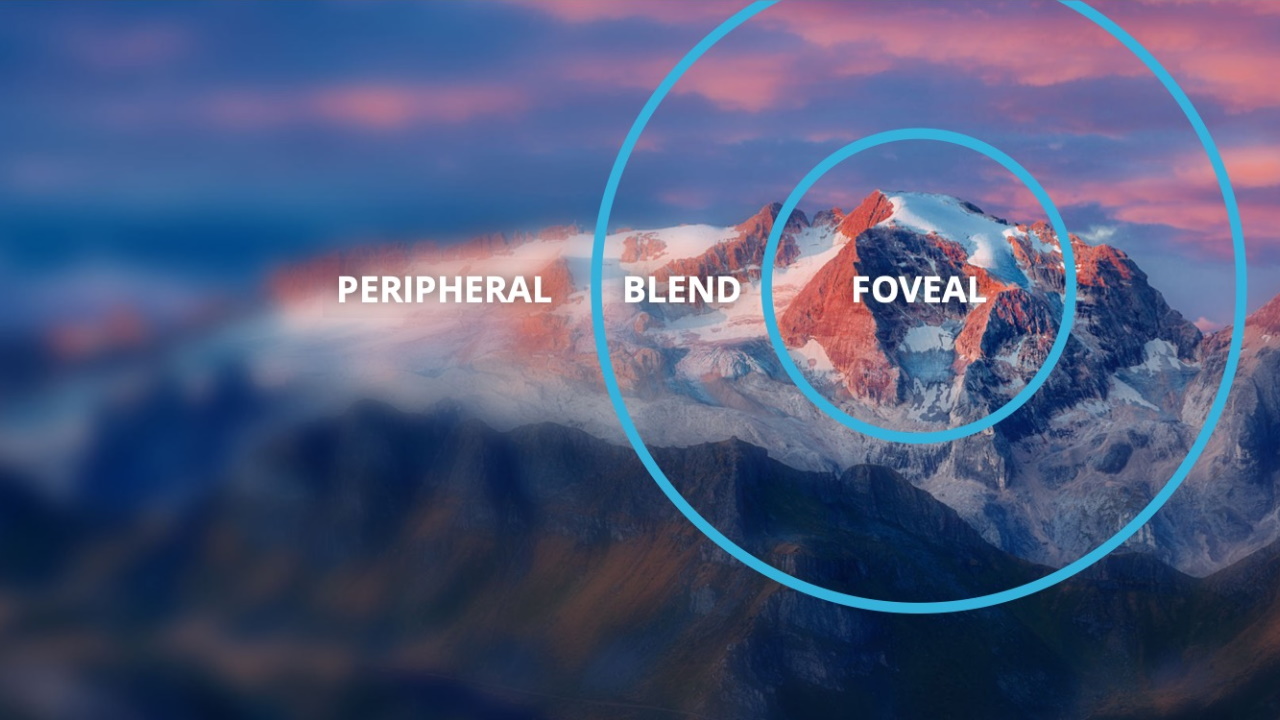What is foveated rendering?
Everything you need to know about the new PSVR 2 feature

If you've been following PSVR 2 announcements, you might have come across the term foveated rendering for the first time. This fairly new technology has many scratching their heads if they haven't been following the developments of virtual reality headsets over the last few years, but in reality, it's a fairly simple concept.
Foveated rendering is a process used by VR headsets to boost resolution where the wearer is looking, and reduce it on the peripheral of their vision. Just like normal sight, foveated rendering works with eye tracking software to enhance only the spot you are looking at, therefore reducing overall demand on the system itself.
The feature has been floating around far more expensive VR headsets over the last few years, so PSVR 2 represents its first real step into the mainstream space. While the system's origins are traced back to a headset produced by VR startup Fove, HTC made the biggest strides in bringing the tech to the wider market back in 2019 with its Vive Pro Eye. This was a headset built around eye tracking and aimed at more business use (with the $1,400 price tag to match).

What is foveated rendering for?
While foveated rendering does require additional tech from eye tracking technology, it does alleviate a lot of the rendering and processing demands on the headset itself. If the headset only has to concentrate on maintaining a high resolution on a specific focal point, it can relax its rendering across the rest of the screen.
However, foveated rendering is also employed to produce a greater sense of immersion and add a little more reality to your virtual experience. By mimicking the human eye's natural design, users are less likely to feel unwell during VR sessions and feel far more comfortable in the virtual world.
Which VR headsets use foveated rendering?
PSVR 2 is set to use foveated rendering when it launches, and will become the first mainstream consumer headset to do so. We're still in the early stages of this new technology, with the previously mentioned HTC Vive Pro Eye currently being one of the few recognizable VR headsets to utilize the feature. However, Nvidia and Qualcomm have both unveiled new solutions to support foveated rendering in the last five years, and smaller steps are being taken in the world of Oculus as well.
Foveated rendering is currently available to Oculus Quest 2 developers, albeit in a simpler form. Rather than requiring eye tracking, a feature that the Quest 2 doesn't offer, 'dynamic fixed foveated rendering' simply reduces the resolution around the peripheral of the screen, rather than the peripheral of the user's sight.
Weekly digests, tales from the communities you love, and more
If you're deciding where to jump into the world of VR, we're rounding up all the best Oculus Quest 2 deals available right now and, if you're after an HTC Vive model, the best gaming PCs will run your virtual world to perfection.

Managing Editor of Hardware at GamesRadar+, I originally landed in hardware at our sister site TechRadar before moving over to GamesRadar. In between, I've written for Tom’s Guide, Wireframe, The Indie Game Website and That Video Game Blog, covering everything from the PS5 launch to the Apple Pencil. Now, i'm focused on Nintendo Switch, gaming laptops (and the keyboards, headsets and mice that come with them), PS5, and trying to find the perfect projector.


